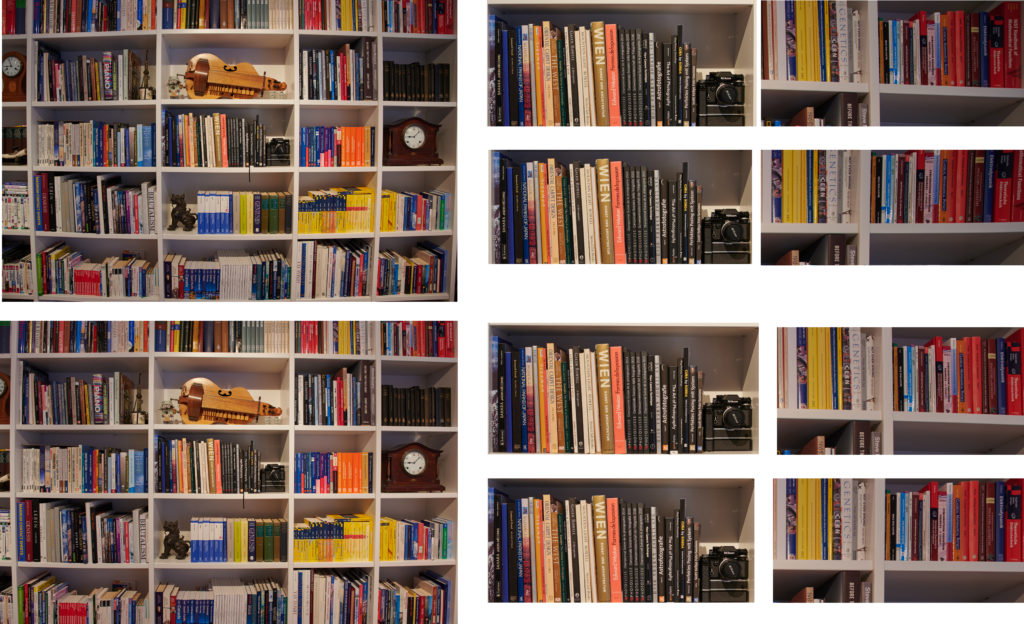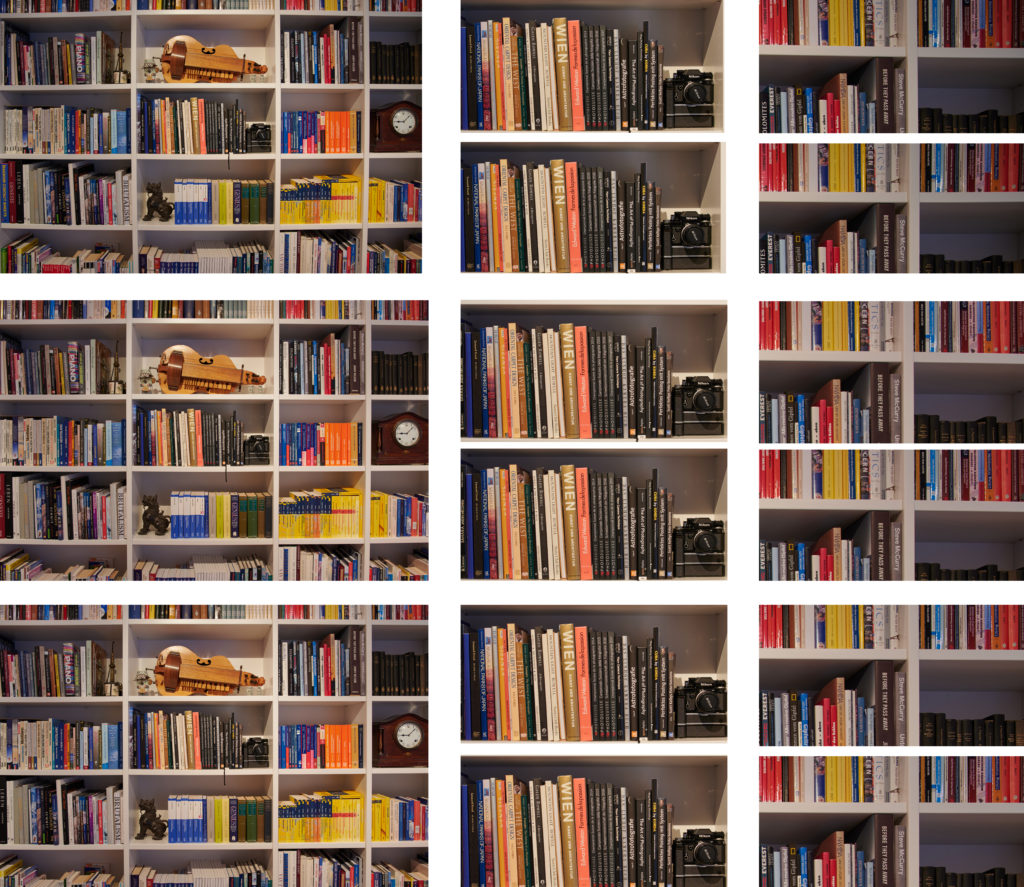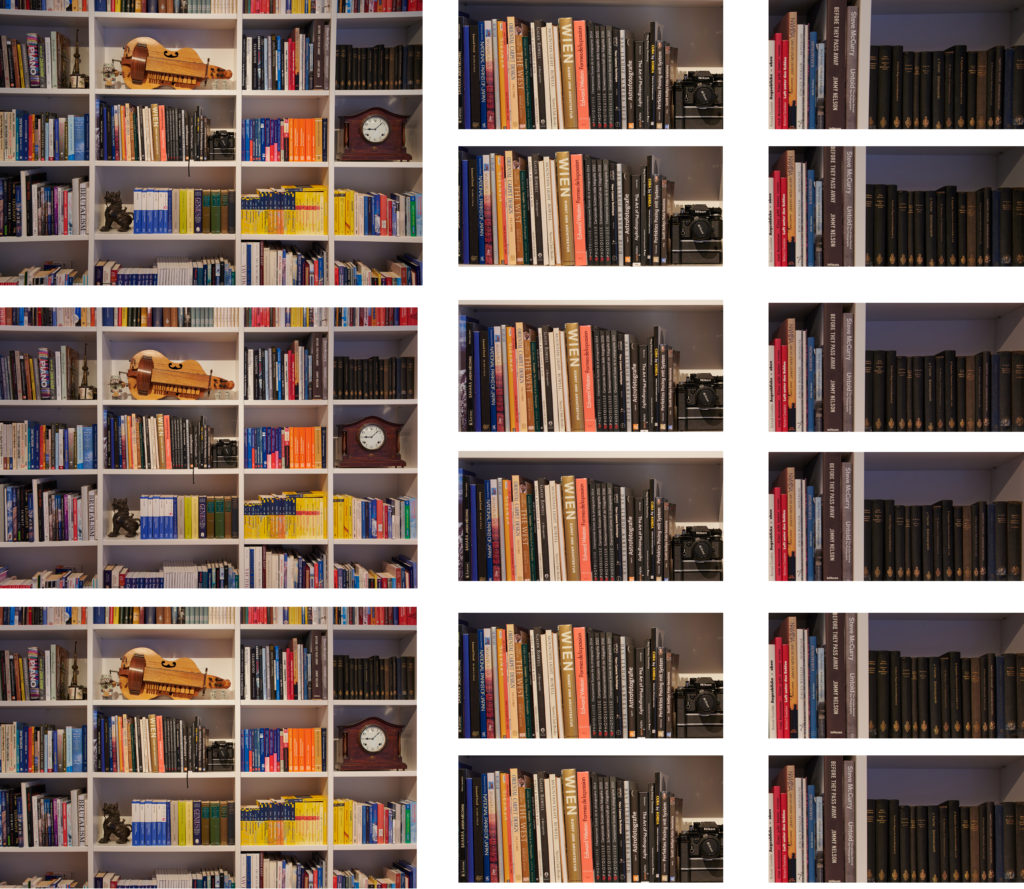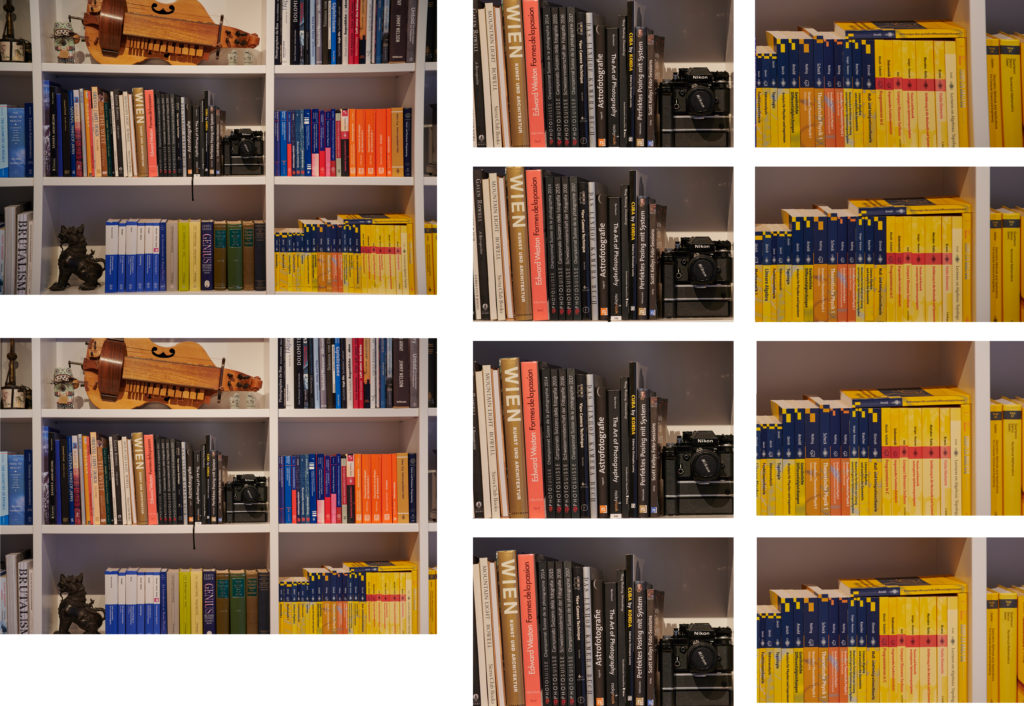
The word badass has both negative and positive connotations, unlike the separate words bad and ass suggest. The positive meaning describes something impressive, admirable, and cool. The negative meaning refers to something frightening and tough.
The tail fins on the 1959 Chevrolet Impala (here in La Habana Centro) are badass. Fins started to appear on American cars in the early 1950s and peaked at the end of that decade. The pinnacle is the 1959 Cadillac Eldorado Seville. The fins supported the concept of design obsolescence; although quite technically similar, the cars and their fins grew bigger every year, so that customers could clearly see the difference between the models.
The geometric-distortion aberrations* of the Nikon 24-70 f/4 S for the Z6 and Z7 mirrorless cameras are definitely badass, whether or not they are a matter of concern will be the subject of this post.
I still can’t get over the fact that the web has been flooded with reviews of the Nikon Z7 although unsupported RAW converters were not available until the recent releases of ON1 Photo RAW 2019 (November 13) and Capture One 12 (November 29). Only unsupported RAW converters allow you to look behind the scene of in-camera file cooking. In Capture One it is easy to disable embedded camera and lens profiles and to turn off sharpening presets. A slider even allows you to enable anything between 0 and 100% of that profile. In Lightroom and Adobe Camera Raw (CC, Classic or LR6) embedded profiles always stay enabled, except if you hack the Exif data with software such as ExifTool or DNG cleaner.

Mirrorless camera systems rely heavily on real-time correction of geometric-distortion artefacts on the graphics processor. This enables the accurate perception of the image in the EVF, whereas distortions cannot be disguised in the optical viewfinder of a DSLR. Well corrected lenses were even more important in ancient (film) times, as heavy distortions on projected slides was considered unacceptable.
Geometric distortions are due to differences in magnification ratios through different parts of the lens. If the magnification decreases with the off-axis subject distance, the distortion will be negative (image points shifted toward the center of the frame) and a barrel-shaped aberration is observed. It is particularly difficult to correct for geometric distortions in retro-focus lenses, designed to increase the distance between the rear element and the image plane (the back focal distance), required by the mirror box of DSLRs.
It is therefore somewhat surprising that minimizing geometric-distortion aberrations (and vignetting) are not among the objectives of the mirrorless lens designers. I welcomed the lighter, standard zoom Nikon 24-70 f/4 S, mainly because I couldn’t care less for bokeh in landscape, architecture and environmental portraits (and therefore the cost and bulk of fast lenses). And when subject isolation is required, I prefer the 85 f/1.4 slightly stopped down, or the 70-200 f2/8 at 135 and aperture 3.6 or 4.5. But looking behind the scenes of the 24-70 f/4 S reveals very high geometric-distortion aberrations.
It is usually said that geometric distortions and vignetting are easy to fix. But when pixels are mapped in software, resolution may be lost. This may have a visible effect on the perceived image quality at larger print sizes. On the other hand, a small sacrifice in resolution may be acceptable for a lens that is much sharper than its well corrected competitor. And for landscapes there is the option of not correcting the distortions at all.
So, let’s go pixel peep. The images show the overall rendering and 100% crops of the center and edge, both for the distorted and the corrected images. The aperture is f/5.6 in all cases. All images were developed in Capture One, where additional sharpening was disabled.




The first observation is that the 24-70 S isn’t any better, or any worse, than the 24-70 f/2.8 G, which I always considered the worst in the “holy trinity” of f/2.8 zoom lenses. My false impression of an improvement over the G was based on cooked SOOC jpegs. The “S” in the lens designation, standing for superior, thus isn’t much more than a marketing claim. If it’s true that the wide flange and the short flange-focal distance yield more design choices for the lens designer, then it only proves that f/4 zoom (and f/1.8 prime?) lenses are designed and marketed as consumer grade (kit) lenses. On the other hand, I could imagine the comments on a $ 2000 f/4 zoom lens, if it was brought to market: such a lens can hardly be “pro”. Moreover, I am comparing a $ 1000 lens (which is even cheaper when bought in the bundle with the camera and the adapter) with the 24-70 f/2.8 G for at least $ 1700 and the 28 f/1.4 for $ 2200. That’s indeed an achievement and we can look forward to the lenses announced for next year.
At 24 mm, the geometric distortion aberrations are of a barrel/mustache type, i.e., high barreling in the center, tapering toward the edges. Above 40 mm the lens shows ever increasing pincushion distortions, which look more regular than the distortions on the wide end.
Fortunately, the distortion correction has very limited effect on image quality. Correcting pincushion distortion even improves the edges by a tiny amount, but all at a level that is hardly field relevant. Similar conclusions can be drawn for far distant subjects, therefore I am omitting the test images here. The test also shows that a considerable improvement of the image quality at f/5.6 working aperture can only be obtained by the best prime lenses on the market, see the results at 28 mm focal length.
But the correction of barrel and pincushion distortions using quadratic** transformations shows its limits. Nothing in La Habana Centro is really straight, but it isn’t as warped as in the first image. The 24-70 f/4 S also suffers from 4th order aberrations and some decentering, which requires proper lens profiling. However, a profile for that lens is not yet available in Capture One and ON1. SR
*We must distinguish here between aberrations due to the lens geometry and perspective distortions due to swing and tilt angle misalignment between the subject and sensor planes.
**Barrel distortions are denoted as “linear” distortions (K1 negative), but this is misleading as the transformation in the horizontal plane is x = xd + (xd – xc) K1 r² where r = √ ( xd-xc)² + (yd-yc)² , and (xd,yd) is the distorted image point and (xc,yc) the distortion center.